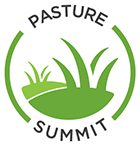Sheryl Brown
 Dairy products remain the rockstar of nutrition in a world facing a food and nutritional challenge, Fonterra chief science and technology officer Jeremy Hill says.
Dairy products remain the rockstar of nutrition in a world facing a food and nutritional challenge, Fonterra chief science and technology officer Jeremy Hill says.
Speaking at the Pasture Summit in November, he told farmers it’s time for the dairy industry to take the gloves off and come out fighting the myths and misinformation around the dairy industry.
“Unless we are careful, some of the myths, some of the factual errors, some of the nonsense we are seeing out there, is going to affect our licence to operate.
“It’s about time we took the gloves off and started punching.”
The world is facing a food challenge and the world is going to need a lot more food and there is a big demand for protein.
Not all proteins are created equal and animal proteins are superior to vegetable-based proteins in the essential amino acids they contain, he says.
“Although we talk about protein nutrition, we should actually be talking about amino acid nutrition.
“Dairy is world-class. Dairy is the gold standard when you consider amino acid nutrition.”
Soy protein, pea protein, rice protein, have less quality amino acids in their proteins.
The one thing that is not going to change in the next 100 years or 1000 years is the nutrition we require as humans, Jeremey says.
“We are going to require the same amino acid composition in order to survive and prosper.”
The myth circulating that dairy is bad for your health is being squashed by medical reports coming out regularly, he says.
Several studies have shown that if people consumed dairy to the recommended daily intakes, about 500ml/day/per person, there would be a substantial reduction in health care costs. Studies have shown the savings could equate to $200 billion in the United States over a five-year period, or $2b/year to the Australian health system.
Science is showing dairy can also be the lowest-cost source of dietary calcium, riboflavin and vitamin B12 and is significantly more hydrating than water and many other beverages.
Conjugated Linoleic Acid (CLA), in milk can also help bodyfat reduction and weight loss.
“The great news is pasture-based milk contains a lot more (CLA) than non-pasture-based milk.”
The best friend to the dairy industry is the United Nations Sustainable Development Goals, he says.
The United Nations Food and Agriculture Organisation signed a declaration with the International Dairy Federation in 2016.
The Dairy Declaration recognises the essential role dairy products play in balanced, nutritious and healthy diets. The declaration also recognised the dairy sector’s role in sustainable development and to countries’ economics, income and employment.
Breaking environmental myths
When it comes to the environmental footprint of dairy, the industry needs to ensure the truth is getting out to consumers.
The current argument is that animal-based protein has an environmental footprint that is inappropriate and therefore society should be doing other things, Jeremy says.
“Agriculture is responsible for about 24% of global greenhouse gas emissions, but that figure is often translated into livestock is responsible for 24%, and then quickly becomes dairy is responsible for 24% of emissions.”
Agriculture uses 5 billion hectares of the world’s land, and roughly, half of that is for plant-based production that goes to human nutrition.
A lot of biomass is produced from plant-based agriculture that humans can’t consume, he says.
About 2.5b hectares is used for animal-based agriculture and contrary to a lot of the messages out there, 2b is in pasture and rangeland.
“It’s not in the intensive systems people believe,” he says.
“If we do away with livestock-based agriculture, we are going to have a problem with the amount of land available that is suitable for the production of human, edible inputs, that are turned into rich sources of nutrition.”
Of total man-made emissions, 2-3% comes from dairy and just 0.1% comes from NZ as a whole; roughly half of NZ’s emissions is from agriculture, and about half of that is from the dairy sector.
“We will not make a difference to the world’s emissions if we eliminated dairy from NZ.”
The way NZ will make a difference to world emissions is through world-leading research on how to reduce emissions per litre of milk, which is what the NZ dairy industry is already doing, he says.
“One of the reasons NZ is world-leading on emissions is the farming practices and the efficiency of production, the pasture-based system, the solids concentration in the milk. If we can take what we’ve learnt from NZ, we can make a difference.”
When it comes to dairy substitutes, such as soy, or almond milk, their environmental footprint is not a lot better than dairy.
“Yes they are better than some of dairy. But if you look at Fonterra’s NZ footprint, it’s lower than some of those substitutes, we are world class.”
Even a soy beverage has double the greenhouse gas emissions for its nutrient content, he says.
“If you look at the nutrient content, and you do a weighted average of what’s in these actual products, the greenhouse gas emissions are horrendous.”
The substitute milk products also don’t stack up when it comes to nutritional replacements.
The nutrients are between three and 30 times more expensive than in dairy, he says.





